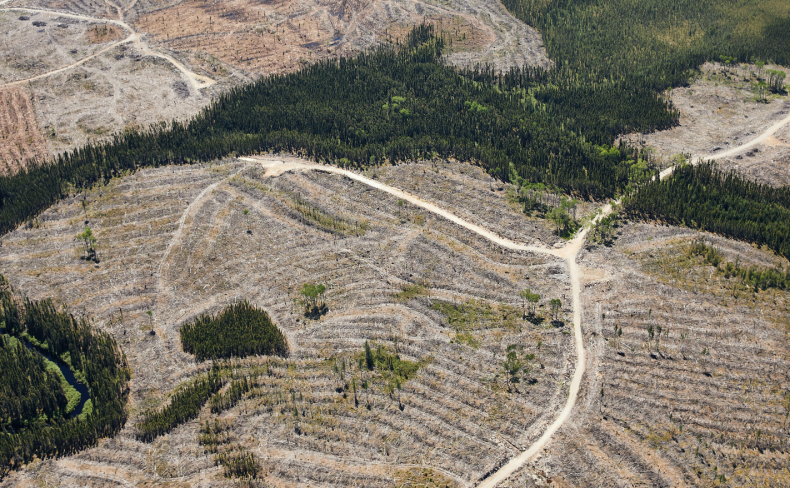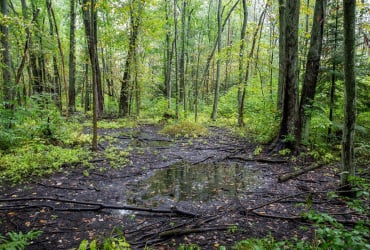If you collected the 80 million tons of carbon emissions that come from buildings in Canada each year, you would have the same amount of greenhouse gases that the country did not report in its forestry sector in 2019.
The numbers come from a new report, Missing the Forest: How logging carbon pools hamper Canada’s climate leadership, published by Environmental Defense Canada, Nature Canada, Nature Québec and NRDC (Natural Resources Defense Council). It found what Michael Polanyi of Nature Canada called “a biased approach to counting and reporting forest sector carbon.”
The underreporting of emissions by 80 million tonnes is significant, said Alice-Anne Simard, executive director of Nature Québec, who notes that forests around the world absorb a third of man-made emissions each year by storing carbon in their soil and flora.
Canada’s boreal has a huge role to play in that: spruce, spruce, pine and tamarack line the 1.3 billion acre area, storing 186 billion tons of carbon, or 27 years’ worth, of the world’s carbon emissions from burning fossil fuels.

What people are reading

However, when trees die, that carbon is released back into the air. That’s why Canada’s managed forest, which occupies part of the boreal forest, has actually emitted more carbon than it has absorbed since 2001. Cutting down forests, especially old-growth ones, releases millions of tons of GHG emissions. Simard said.
The report describes some of the ways this underreporting is occurring, such as “using a skewed and unbalanced accounting approach that ignores emissions from wildfires but claims credit for CO2 captured by older trees.”
That makes the timber industry appear carbon neutral when in fact it is not, Simard explained.
A new report from @naturecanada @nrdc @naturequebec and @envirodefence has found that Canada is underestimating emissions from the forestry sector by more than 80 million tonnes a year.
Canada currently does not count emissions from wildfires, despite the fact that in the province of British Columbia alone wildfires are burning 10 times more than in the 1990s. Combine that underreporting with the country taking credit of the CO2 captured by older trees, an unfair picture is presented, said Simard, who noted that many of these trees are not managed by the forestry sector.
It’s reminiscent of net-zero promises from fossil fuel and tech companies, which say their offsets from tree planting and other initiatives offset their emissions, Simard said.
“You cannot take credit for the carbon that trees absorb if it is not managed. They are just naturally growing trees that they haven’t planted, ”he said.
Other ways the report says Canada is underreporting emissions include “not measuring and reporting emissions related to forest roads and seismic lines” and “exempting emissions from the timber industry from carbon pricing regulations in other sectors. “.
“There is a price on pollution … in Canada from burning fossil fuels, but there is no price on emissions produced by the logging industry,” Simard said.
“There are all these emissions that come from cutting down trees, cutting down forests that we believe should also be included in the regulation, that should have a price. Because after all, the atmosphere does not distinguish between carbon emissions from fossil fuels and emissions from logging ”.
National Observer of Canada contacted NRCan on Friday afternoon for a statement on the findings, but did not immediately receive a response.
The report comes as Canada joins world leaders in Scotland to COP26.
The conference, also known as COP, short for Conference of the Parties, has brought the world together since 1995 to strike agreements to reduce global warming. The talks bring together legislators, scientists, environmental activists, climate experts and the media from the 197 member countries of the United Nations Framework Convention on Climate Change (UNFCCC) to set and work towards global climate change goals. This year, COP26 takes place at the Scottish Event Campus in Glasgow, Scotland, from October 31 to November 12.
With Steven Guilbeault taking over as Canada’s minister of the environment ahead of the conference, Simard said the report is especially timely. At the conference, the remaining sections of the Paris Agreement will be finalized, so all eyes are on how Canada approaches those negotiations.
“(At COP26), there will be a discussion about what we count on offsetting emissions and how we can really get a carbon neutral world using trees, but without all these loopholes and exceptions,” he said.
NDP MP Lauren Collins, who is the party’s critic for the environment and climate change, wrote a public letter to Guilbeault after seeing the report, co-signed by NDP MP Richard Cannings, urging him to consider her recommendations. .
“The implications of undeclared emissions of this magnitude for Canada’s ability to meet our greenhouse gas emissions targets are serious and concerning,” the letter reads.
“Carbon counting is complex in the forestry sector. But it is essential that we have accurate accounting of emissions and sequestration of forests if Canada is to meet its climate change goals. “
The report’s recommendations include that Canada count forest emissions that the authors say are now left out, such as those from wildfires. It is also vital to ensure that these solutions are indigenously focused and led, and that more funds are directed to indigenous communities for forest management.
Ultimately, Simard said the importance of forests in Canada, and the solutions needed, cannot be undermined.
“Canada’s forests are essential to avoid the worst impacts of climate change and catastrophic species loss,” he said.
“The world is looking to Canada for leadership, but we must first address the fundamental flaws in our approach to forest carbon.”
Reference-www.nationalobserver.com